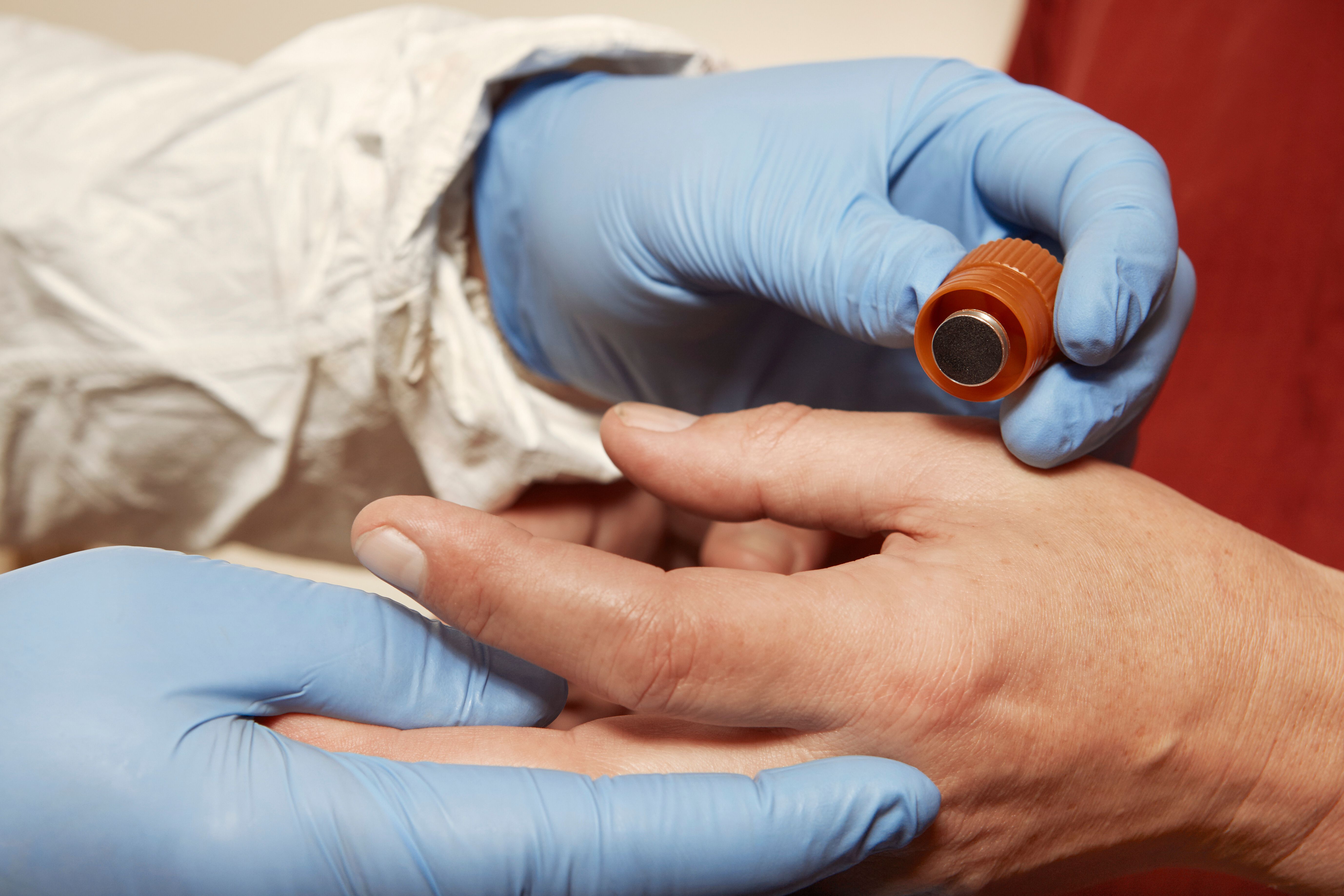Portable LIBS Paves the Way for More Effective Gunshot Residue Testing
Forensics is a storied field, but one of the areas that lack reliable analysis techniques is the investigation of gunshot residue (GSR). The collection of GSR is often left to the discretion of the investigator, and with no routine screening methods available, turnaround times can reach up to two months.
Proccess of collecting possible gunshot residue from suspected man indoor | Image Credit: © Couperfield - stock.adobe.com

In a new study, published in Spectrochimica Acta Part B: Atomic Spectroscopy, scientists present a Laser Induced Breakdown Spectroscopy (LIBS) instrument that is designed with enhanced magnification qualities for single particle targeting, argon gas flow, and a custom sample stage that is compatible with the standard aluminum stubs used by law enforcement and SEM-EDS detection(1). The portable LIBS system’s performance was compared to a laboratory LIBS instrument. Both instruments had more than 98.8% accuracy rates.
Gunshot residue contains inorganic and organic constituents, labeled as IGSR and OGSR, respectively, that land on nearby surface when a gun is fired. To identify IGSR, currently most scientists rely on Scanning Electron Microscopy-Energy Dispersive X-Ray Spectrometry (SEM-EDS). While this method can easily identify particles that are rarely found anywhere other than GSR, which stems from these particles’ spherical morphology and elemental compositions, it is a time-consuming process that can last hours to scan a single sample. Other methods of screening for IGSR have been proposed to reduce costs and analysis times, such as Raman spectroscopy and electrochemistry.
Portable LIBS systems, by comparison, can help speed up response times, enabling samples to be analyzed in minutes, compared to hours when using SEM-EDS. If properly incorporated into workflows, crime scene investigations can be improved, backlogs can be reduced, and case management will improve.
Previous studies have looked at LIBS as a method for analyzing GSR. However, these methods faced various issues, including being unable to work without direct contact, which risks damage to samples, a lack of argon flow that can increase analyte signals, and an inability to visualize the sample surface to establish sampling locations, which could lead to inaccurate analyses.
Reference
(1) Pyl, C. V.; Menking-Hoggatt, K.; Arroyo, L.; Gonzalez, J.; Liu, C.; Yoo, J.; Russo, R. E.; Trejos, T. Evolution of LIBS technology to mobile instrumentation for expediting firearm-related investigations at the laboratory and the crime scene. Spectrochim. Acta Part B At. Spectrosc. 2023, 207, 106741. DOI: https://doi.org/10.1016/j.sab.2023.106741
LIBS Illuminates the Hidden Health Risks of Indoor Welding and Soldering
April 23rd 2025A new dual-spectroscopy approach reveals real-time pollution threats in indoor workspaces. Chinese researchers have pioneered the use of laser-induced breakdown spectroscopy (LIBS) and aerosol mass spectrometry to uncover and monitor harmful heavy metal and dust emissions from soldering and welding in real-time. These complementary tools offer a fast, accurate means to evaluate air quality threats in industrial and indoor environments—where people spend most of their time.
AI-Powered SERS Spectroscopy Breakthrough Boosts Safety of Medicinal Food Products
April 16th 2025A new deep learning-enhanced spectroscopic platform—SERSome—developed by researchers in China and Finland, identifies medicinal and edible homologs (MEHs) with 98% accuracy. This innovation could revolutionize safety and quality control in the growing MEH market.
Nanometer-Scale Studies Using Tip Enhanced Raman Spectroscopy
February 8th 2013Volker Deckert, the winner of the 2013 Charles Mann Award, is advancing the use of tip enhanced Raman spectroscopy (TERS) to push the lateral resolution of vibrational spectroscopy well below the Abbe limit, to achieve single-molecule sensitivity. Because the tip can be moved with sub-nanometer precision, structural information with unmatched spatial resolution can be achieved without the need of specific labels.
New Raman Spectroscopy Method Enhances Real-Time Monitoring Across Fermentation Processes
April 15th 2025Researchers at Delft University of Technology have developed a novel method using single compound spectra to enhance the transferability and accuracy of Raman spectroscopy models for real-time fermentation monitoring.
AI-Driven Raman Spectroscopy Paves the Way for Precision Cancer Immunotherapy
April 15th 2025Researchers are using AI-enabled Raman spectroscopy to enhance the development, administration, and response prediction of cancer immunotherapies. This innovative, label-free method provides detailed insights into tumor-immune microenvironments, aiming to optimize personalized immunotherapy and other treatment strategies and improve patient outcomes.